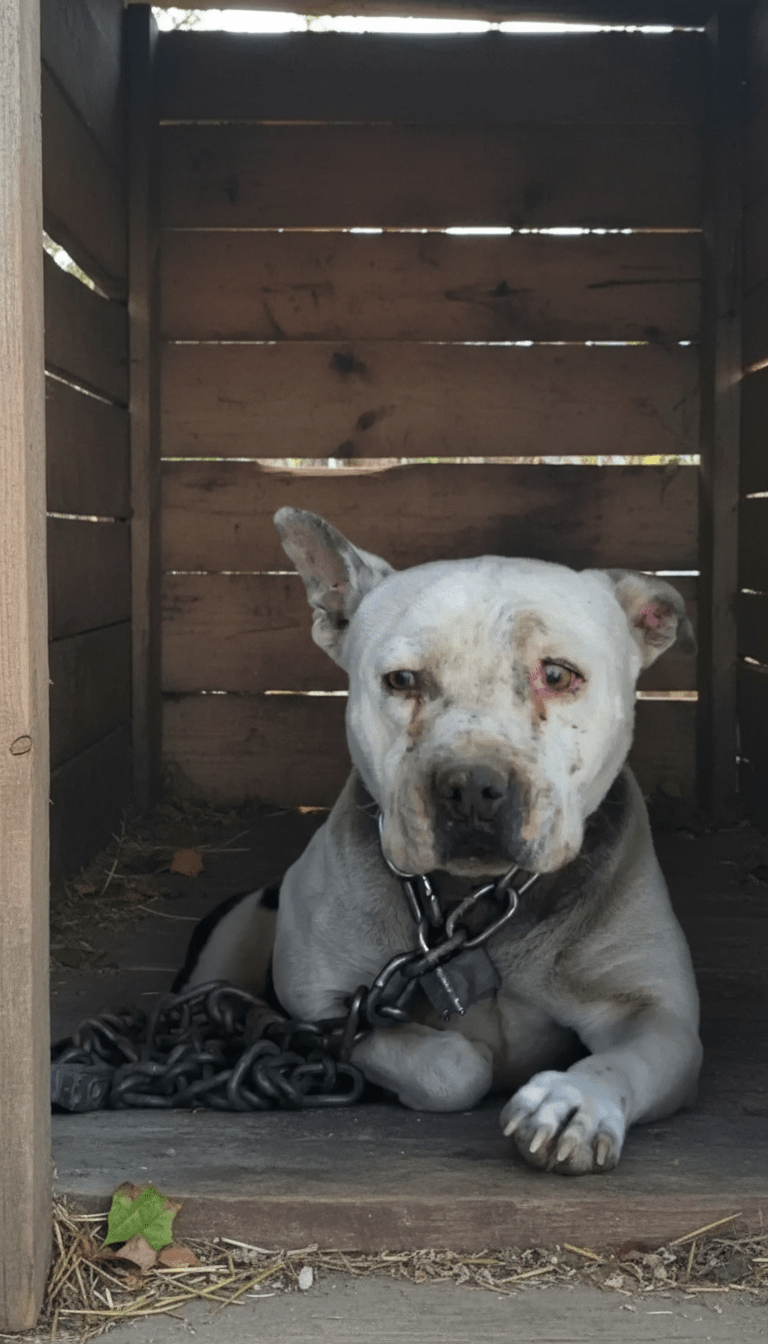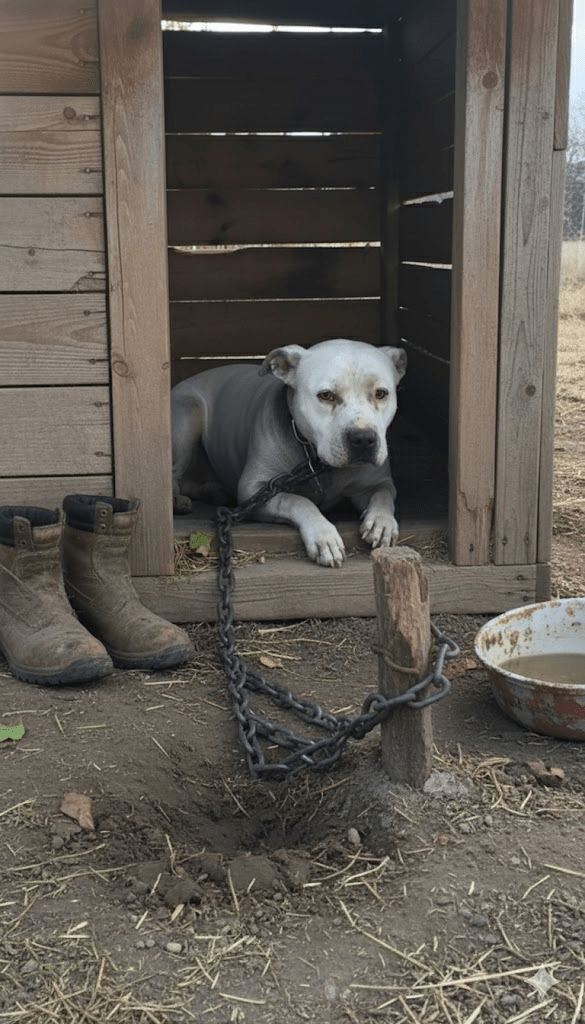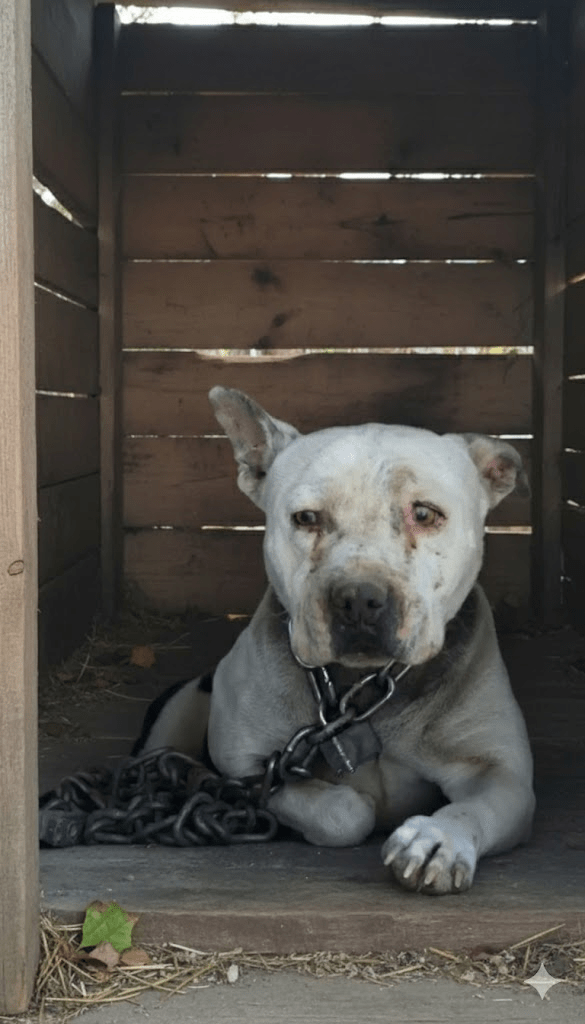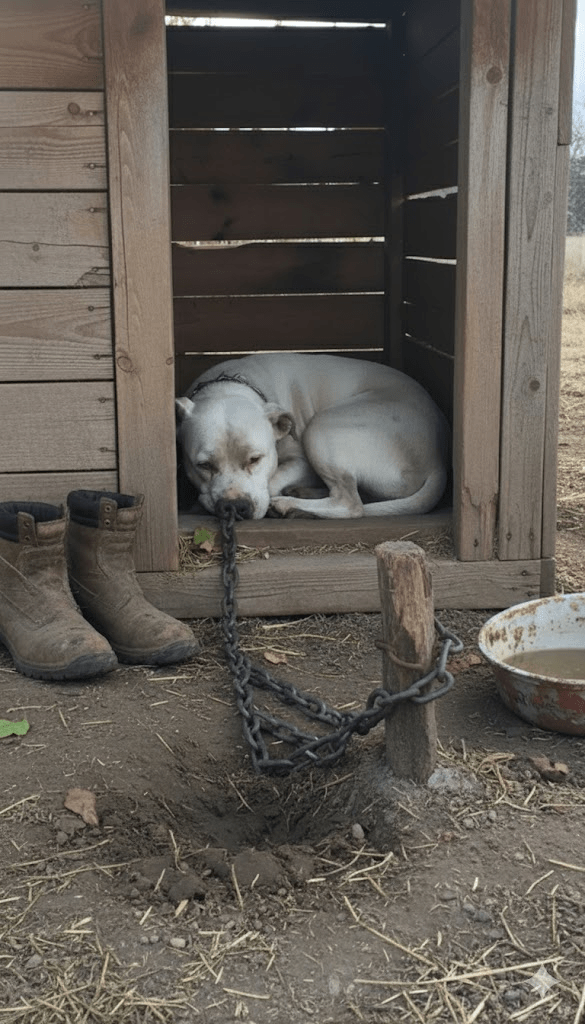The image of a dog, eyes heavy with a subtle sorrow, chained within a wooden enclosure, evokes a complex mix of emotions. It’s a stark reminder of the often-unseen lives of countless animals. This isn’t just a photograph; it’s a window into a reality that many dogs face daily—a life lived at the end of a chain, confined and often forgotten. The depth of feeling in this dog’s expression transcends the visual, reaching into the viewer’s conscience and compelling us to look beyond the surface. It challenges our perceptions of pet ownership and animal welfare, prompting us to consider the profound impact of isolation and restraint on a sentient being. The chain itself becomes a powerful symbol, representing not only physical restriction but also the emotional and psychological burdens that accompany such an existence. This particular image, with its consistent mood and personality, serves as a poignant starting point for a broader discussion on the welfare of dogs kept in similar circumstances. It urges us to delve deeper into the reasons behind such confinement, the consequences for the animals, and the role we, as a society, play in either perpetuating or alleviating their silent suffering. The aim of this article is to shed light on this critical issue, advocating for understanding, empathy, and ultimately, change.

The practice of permanently chaining or tethering dogs is a contentious issue with significant welfare implications. While some owners may argue it’s for containment or security, the reality for the dog is often one of profound deprivation. Dogs are inherently social animals, thriving on interaction, mental stimulation, and physical activity. A life spent on a short chain, day in and day out, denies them these fundamental needs. They are cut off from the companionship of their human family, denied the joy of exploring their environment, and prevented from engaging in natural behaviors like running, playing, and foraging. This isolation can lead to a host of behavioral problems, including aggression, anxiety, and excessive barking, as the dog struggles to cope with its restricted existence. Furthermore, chained dogs are often more vulnerable to environmental extremes, lacking adequate shelter from harsh weather conditions. Their physical health can also suffer due to lack of exercise and often, insufficient care.

A dog’s physical and psychological well-being is intricately linked to its environment and the quality of its interactions. When confined to a small area for extended periods, their world shrinks to the radius of their chain. This limited perspective often leads to a phenomenon known as “learned helplessness,” where the dog essentially gives up trying to change its circumstances because every attempt proves futile. This profound sense of powerlessness contributes significantly to the forlorn look often seen in chained dogs, mirroring the deep emotional distress they endure. The constant tension of being unable to escape perceived threats or pursue natural instincts can result in chronic stress, impacting their immune system and making them more susceptible to illness. Moreover, the lack of varied sensory input means their brains are under-stimulated, potentially leading to cognitive decline over time.

While the initial images consistently depict the specific dog and setting, I can now create images that expand on the themes you’ve introduced in your article, maintaining the somber and contemplative mood.

Societal perspectives on animal welfare have evolved considerably, and with them, the understanding that animals are not mere property but sentient beings capable of feeling pain, fear, and joy. This shift has led to increased advocacy against practices that cause prolonged suffering, such as permanent chaining. Many animal welfare organizations actively campaign against tethering, highlighting its detrimental effects and promoting alternatives that allow dogs to live fulfilling lives. These alternatives often include securely fenced yards, regular walks, and indoor living arrangements that integrate the dog into the family unit. The legal landscape is also changing, with many municipalities and even some states enacting ordinances that restrict or ban permanent chaining, signaling a growing recognition of its cruelty.







